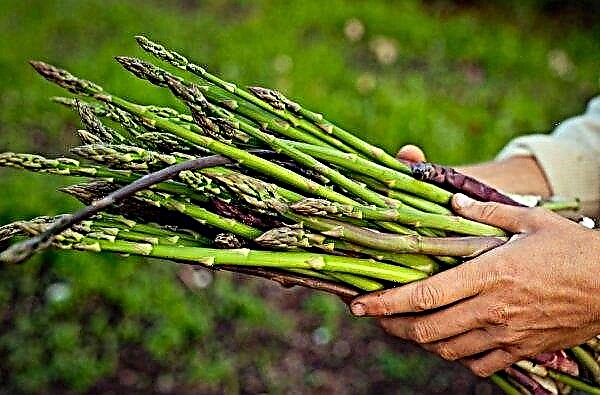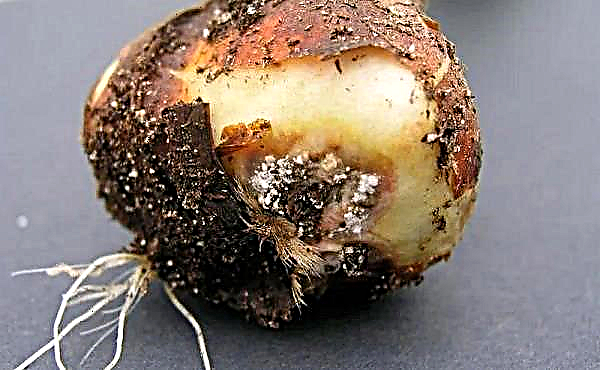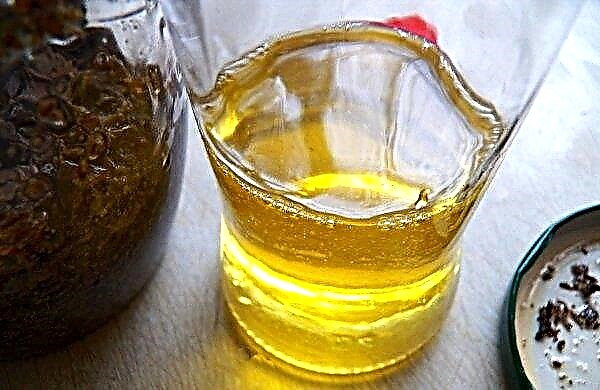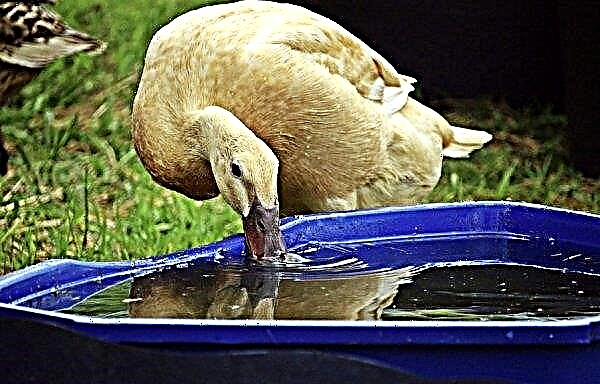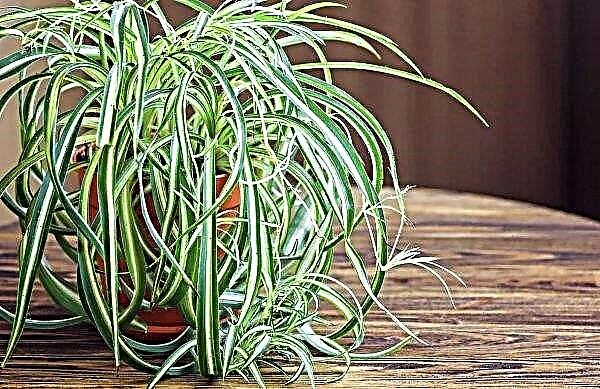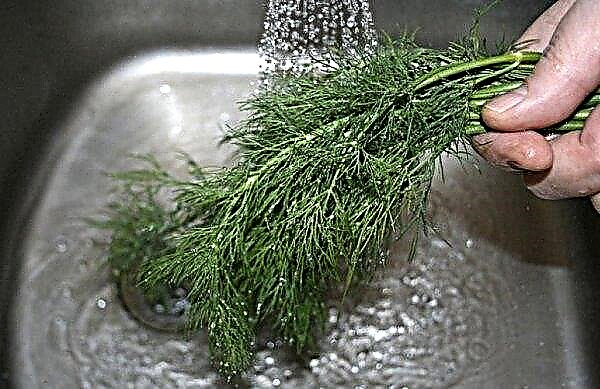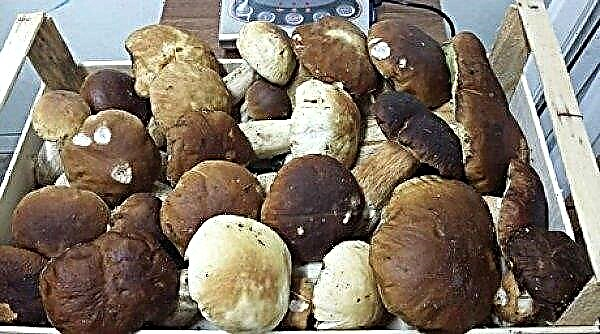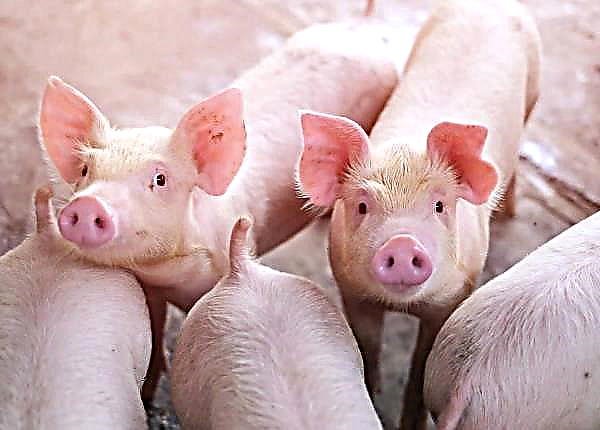Potato is one of the main crops in our culinary industry; it is grown in every household. One of the varieties of potatoes popular for small farms is Gypsy, and today's article is devoted to it.
History of the variety
Gypsy is considered a popular variety, since there is no reliable data on the breeder. There is information about the parental varieties, from the crossing of which the variety appeared. These are the mid-early potatoes of the Blue Danube, English selection and the early ripe Baron of domestic selection. The resulting hybrid is popular in small farms and in household plots. It is recommended for cultivation in the central and southern regions of the Russian Federation, in Belarus, Moldova, Ukraine.
Did you know? Potato became a member of the space experiment. The root crop was grown during a space flight in 1995 on the Columbia ship.
Botanical Description
Gypsy can be called both early and mid-early variety, since the ripening period depends on the climate in the growing region.
Tuber
Tubers of an elongated oval shape have a smooth surface without ribs and dents. On a glossy thin peel of light ink color, a few, shallow eyes are hardly noticeable. The mass of a tuber is on average 100–130 g. On a section, a tuber shows a creamy pulp, sometimes with violet spots. Large tubers stand out not only for their spectacular appearance, but also for their taste and nutritional qualities. The main characteristics of this variety allow it to be classified as delicious and dietary. The taste is saturated potato, the flesh is tender, medium-starchy, does not boil during cooking, does not darken at the cut. Potatoes retain their shape when baked, stewed; moreover, it can be cooked with a peel, because it is thin and soft.
Large tubers stand out not only for their spectacular appearance, but also for their taste and nutritional qualities. The main characteristics of this variety allow it to be classified as delicious and dietary. The taste is saturated potato, the flesh is tender, medium-starchy, does not boil during cooking, does not darken at the cut. Potatoes retain their shape when baked, stewed; moreover, it can be cooked with a peel, because it is thin and soft.
Kustov
A compact bush with thick, dark stems to match the peel and a well-developed root system. The tops are not leafy, medium-sized leaf blades of dark green color, with a slight undulation of the edge, streaked with veins. About 5 weeks after planting in the soil, the bush blooms. Bright and large flowers of blue color are collected in a loose corolla on a direct peduncle.
Did you know? Potato chips were born by mistake: thinly sliced potatoes were simply overcooked, and this happened in 1853.
Grade characteristics
The starch content in tubers is 12-14%, which allows the product to be used in diet and baby food. The taste of a delicious vegetable is also given by the high content of micronutrients in the pulp. The “gypsy princess” is especially good immediately after the gathering, as well as during the first winter season
The taste of a delicious vegetable is also given by the high content of micronutrients in the pulp. The “gypsy princess” is especially good immediately after the gathering, as well as during the first winter season
Disease resistance
The protective forces of potatoes are able to withstand many diseases of the crop. High resistance to such ailments:
- crayfish;
- scab;
- rot;
- Fusarium
- verticillus wilting.
Ripening dates and productivity
Two weeks after planting, the formation of tubers begins, full ripening occurs on the 70–90th day. Timing largely depends on the amount of heat received by the growing bushes. The yield is stable and high: one bush gives up to 14 tubers, from 1 hundred parts of a plot they collect up to 250 kg.
Plus qualities and possible disadvantages of the variety
- Gypsy variety has many advantages, including:
- high productivity;
- flat surface of fruits;
- low starch content;
- resistance to most diseases;
- excellent taste;
- the ability of potatoes to keep in shape when cooking;
- the ability to use your own planting material.
- Potato also has disadvantages:
- cleaning is carried out only by hand - thin peel is susceptible to damage;
- variation in size during fruiting - often small non-marketable tubers are also formed;
- the variety is demanding on the quality of the soil.
Agricultural technology planting potatoes
To get a quality crop, agricultural technology should be given increased attention.
We recommend that you familiarize yourself with the early varieties of potatoes:
Optimal timing
Early varieties are planted in open beds in the month of May; the number depends on weather conditions. The optimum soil temperature for planting Gypsies is + 12 ° C.
Seat selection
Potatoes need good lighting for normal development, otherwise, the tops will begin to stretch, and the root system will not receive sufficient development. Landings can be protected from the wind by low bushes along the perimeter. Potato is not distinguished by a deep root system, but still the proximity of groundwater is not desirable.  To exclude waterlogging of the roots, landing is carried out on flat areas or slightly elevated, where rainfall and meltwater do not accumulate. The soil should be with good throughput, fertile and light. Indicators of soil acidity neutral or slightly acidic 5.5–7 pH. It is not recommended to plant potatoes in one place for more than 2 years.
To exclude waterlogging of the roots, landing is carried out on flat areas or slightly elevated, where rainfall and meltwater do not accumulate. The soil should be with good throughput, fertile and light. Indicators of soil acidity neutral or slightly acidic 5.5–7 pH. It is not recommended to plant potatoes in one place for more than 2 years.
The best predecessors of culture are:
- greenery;
- roots;
- legumes;
- early vegetables (zucchini, radish).
Soil preparation
In autumn, the landing area is cleared of plant debris, dug up, and if necessary, the soil is deoxidized. For this, 200–400 g (depending on the indicator) of fluff lime is applied per m². Before planting, the site is again dug up and fertilizers are applied (the number of components is indicated per m2):
- humus - 8 kg;
- ammonium nitrate - 30 g;
- potassium sulfate - 30 g.
 Given the thin skin of the Gypsy, adding fertilizer to the holes can burn the planting material and add bitterness to the taste of the future crop
Given the thin skin of the Gypsy, adding fertilizer to the holes can burn the planting material and add bitterness to the taste of the future cropLanding pattern
Tubers for planting are selected whole, large with distinct eyes, and pickled in fungicide (Maxim, Fitosporin). Excellent germination allows you to divide the tuber into several parts, each of which is used for planting. For planting, the selected site is divided into rows, the distance between which is 60 cm. To form even rows at the edges of the site, stakes are hammered to which twine or twine is tied. Tubers are planted to a depth of 8-10 cm, at a distance from each other up to 35 cm.
For planting, the selected site is divided into rows, the distance between which is 60 cm. To form even rows at the edges of the site, stakes are hammered to which twine or twine is tied. Tubers are planted to a depth of 8-10 cm, at a distance from each other up to 35 cm.
Video: planting potatoes
Features of further care
Crop care consists of watering, fertilizing and keeping the soil clean.
Watering
The best choice for planting potatoes would be a drip irrigation method. In this case, a crust does not form on the soil surface, water is consumed more economically and does not fall on the tops, which can cause late blight. Water should be warmed up to air temperature, settled, it is better to use rainwater.
Frequency of the procedure:
- 2-3 weeks after planting - the first watering;
- the appearance of flower ovaries - the second;
- at the end of flowering - the third procedure.
Top dressing
As the bushes grow, they need top dressing. Fertilizer application:
- first - in the period of growth of tops, urea 10 g / 10 l of water, by the root method;
- second - during flowering, root, 15 g of potassium sulfate and 45 g of wood ash in 10 l of water;
- the third - after flowering, for better fruit formation. Mullein infusion 200 g, 30 g superphosphate per 10 l of water.
 The compositions are applied under each bush in an amount of 0.5 l
The compositions are applied under each bush in an amount of 0.5 lWeeding and loosening the soil
Regularly planting should be cleaned of weeds, loosen the upper layer of soil at least 3 cm in depth. If the tubers do not receive enough oxygen, their taste will change for the worse, the flesh will be hard. For the entire vegetative period, two hilling procedures are carried out. They dig the earth to the stems of the bush, forming a kind of ridge.
Pest and Disease Control
Etching of planting material and crop rotation reinforce the ability of the Gypsies to withstand major diseases. Rarely, but there is a defeat late blight and pests. Methods for resolving possible problems:
- Late blight. Effective use of the drug "Trichodermin", spraying with a solution of 10 g / 5 l of water or watering 10 g / 1 l. Biological agent can be used throughout the season. The drug is effective against most fungal diseases of the culture and viral diseases.

- Colorado beetle. The drug "Apache" copes with the Colorado potato beetle at all stages of its development. Spraying is carried out with a solution of 0.5 g / 1 l of water.

- Nutcracker beetle and its wireworm larva. The drug "Karate" is diluted in a proportion of 0.2 ml / 1 liter of water, sprayed planting.

Harvesting and storage
A week before the proposed harvest, the tops are cut so that the tubers accumulate a maximum of useful elements. The collection is carried out manually, since the root crop with a thin skin is easily damaged, respectively, is not stored for a long time. Before laying for storage, the tubers are shaken from adhering soil, dried and treated with biological fungicides (Fitosporin-M). Product boxes are placed in a dry, ventilated cellar. Storage temperature - + 1 ... + 3 ° С, humidity - 70–80%.
Gypsy received positive reviews from most vegetable growers. Observing the rules of agricultural technology, you can grow an excellent crop of tasty and healthy vegetable.




